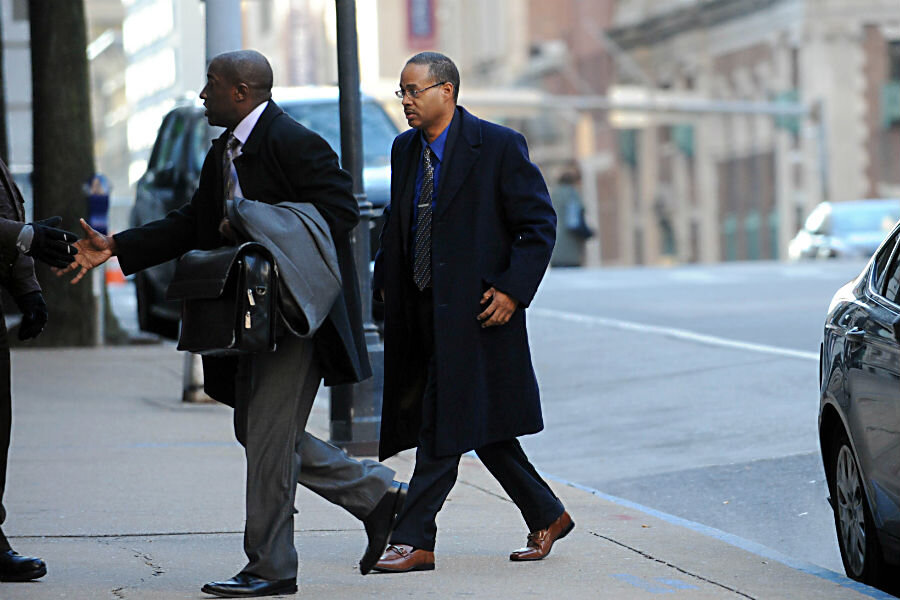Freddie Gray van driver trial: High stakes for Baltimore
Loading...
UPDATED at 10:05 a.m. Eastern time: Reuters reported that Baltimore City Circuit Court Barry Williams has ordered a delay in the trial of Officer Caesar Goodson Jr. The appeals court is deciding whether Officer William Porter, whose own trial ended in a hung jury, could be compelled to take the stand against Goodson and another officer.
---
As the trial of the second police officer charged in Freddie Gray’s case begins Monday, activists in Baltimore ache for a conviction in a death that shook the city last year.
As one of six officers charged in Mr. Gray's death, Officer Caesar R. Goodson Jr. is the second to go on trial. However, he may be the first to yield a conviction, as the one before him, the manslaughter trial of Officer William G. Porter, ended up with a hung jury last month.
Mr. Goodson faces the harshest charges out of the six – second-degree murder, with a maximum sentence of 30 years in prison. His case will begin with jury selection Monday.
“I don’t think that the city can afford for this trial to be perceived as another loss, another check in the loser column,” the Rev. Cortly Witherspoon, a leader of protests at the Baltimore courthouse, told The New York Times. “The general public will not respond well.”
Goodson, a 17-year veteran of the force, was the driver of the van that transported Gray from the site of his arrest April 12, 2015, to the Western District police station. In the 45-minute trip, he made six stops. Gray was handcuffed, shackled, but not restrained by a seat belt. By the time the 25-year-old Gray arrived at the station, he had already stopped breathing.
A week later, on April 19, Gray died, catalyzing intense protests across Baltimore and revealing the deep rift between the city’s mostly black residents and its police. The protests gave way to violent rioting, and for months, Baltimore remained on edge.
If convicted, Goodson would represent justice for frustrated protesters. But for prosecutors to make their case, they must be able to to prove that Goodson willfully disregarded Gray’s life and deliberately allowed him to die, a charge called “second-degree depraved-heart murder.”
All of the officers involved in Gray’s arrest and transport, the prosecutors say, are responsible for Gray's fatal injuries because they failed to respond to his medical needs and did not buckle him into a seat belt during what was considered a “rough ride.”
But Goodson is the most accountable, as Gray was technically in his custody after being pursued and dragged into his van by two other police officers.
In his trial, Officer Porter testified that he thought Gray was faking his injuries, but his lawyers said Goodson, the driver, was primarily responsible for Gray’s safety. Originally lined up to be a witness in Goodson’s trial, Porter was blocked from taking the stand before his own appeal is decided.
Instead, the prosecution has found a new witness – Stanford Franklin, a retired Baltimore police officer and Maryland state trooper.
“Every police officer knows that someone in the back of that van, if they’re not seat-belted in, they’re, because of the inertia from making turns, from making starts, from making stops, they’re going to be thrown all over the inside of that van,” he said in an interview with TheRealNews.com.
Still, legal experts say the prosecutors face a heavy burden, especially without Porter’s testimony.
"The advantage is Goodson can't be impeached by previous statements to investigators because he didn't make any," Warren Alperstein, a Baltimore attorney, told ABC news.
"There's also a possibility that he testifies that Officer Porter never told him Gray needed a medic. Then what? How do you prove otherwise?"








